When to Consider the Size of a Guinea Pig Breed for Your Space
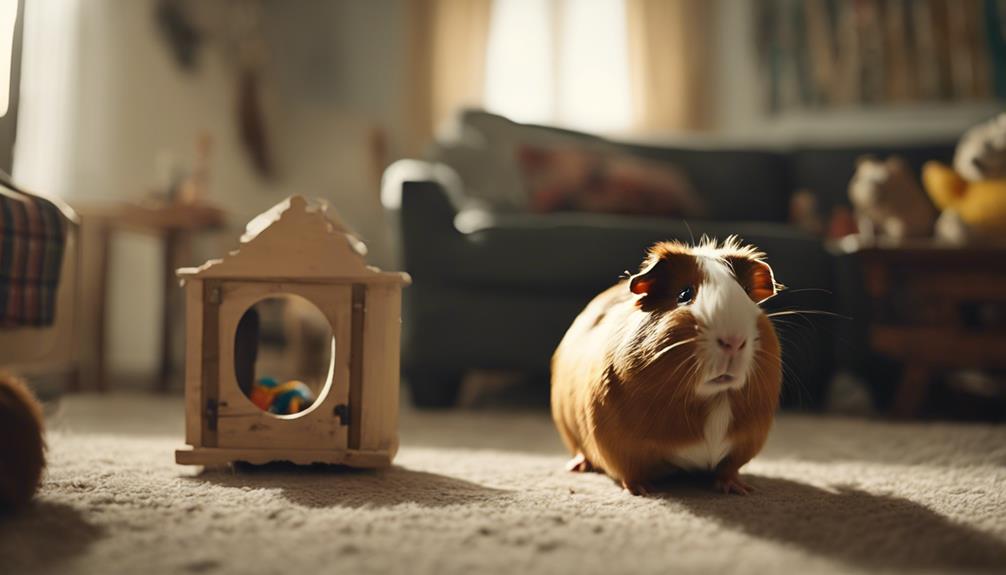
When choosing a guinea pig breed, it is important to consider the size of the breed in relation to the space you have available. Different breeds of guinea pigs vary in size, with some being larger than others. It is essential to ensure that your guinea pig has enough space to move around and exercise comfortably in its enclosure. Additionally, the size of the breed may impact the amount of food and water they require. By taking into account the size of the guinea pig breed, you can provide optimal care and comfort for your pet.
Choosing the right size of a guinea pig breed for your space is crucial in ensuring that your pet has enough room to move around and exercise comfortably. Different breeds vary in size, so it's important to consider this factor when selecting a guinea pig. Providing adequate space for your guinea pig is essential for their physical and mental well-being. Additionally, the size of the breed may also affect the amount of food and water they need. By selecting a breed that is well-suited to the space you have available, you can ensure that your guinea pig is happy and healthy.
Importance of Guinea Pig Breed Size
Understanding the importance of guinea pig breed size is crucial for creating a suitable living environment that caters to their specific spatial needs. Guinea pig breed size plays a significant role in determining the appropriate cage size and space requirement essential for their well-being.
Larger breeds like the Rex, which can grow up to 17 inches in length, will naturally need more space compared to smaller breeds like the American and Texel. These variations in size are influenced by a combination of genetics, diet, and overall health.
Space Considerations for Different Breeds
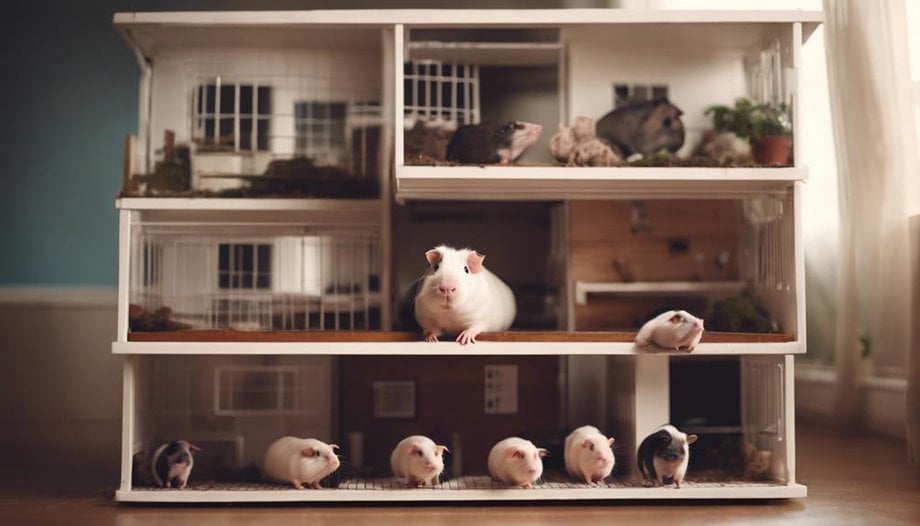
Considering the size variations among different guinea pig breeds is essential when planning the space requirements for their optimal comfort and well-being.
Guinea Pig Size: Understanding the size potential of various guinea pig breeds, such as the larger Rex breed or the petite American and Texel breeds, is crucial when determining the space needed to house them appropriately.
Space to house: Factors like breed size and growth patterns should be taken into account when deciding on the cage size to ensure the guinea pigs have ample room to move, play, and exhibit their natural behaviors.
Small animal: Despite being small animals, guinea pigs require sufficient space to live comfortably and thrive. Providing them with a spacious environment that caters to their specific breed size contributes to their overall happiness and well-being.
Habitat Requirements for Various Sizes

When planning the habitat for guinea pigs of different sizes, it's crucial to consider their specific space requirements to ensure their comfort and well-being.
Larger guinea pig breeds, like the Rex breed, may necessitate more spacious habitats due to their adult size reaching up to 17 inches. On the other hand, smaller breeds such as the American and Texel varieties can thrive in slightly smaller enclosures compared to their larger counterparts.
To provide an optimal living environment, it's essential to tailor the habitat requirements to accommodate the natural behaviors and space needs of different guinea pig breeds. By understanding the size differences among guinea pig breeds, you can create a suitable living space that meets the specific needs of your furry companions.
Remember to consider the average size of the breed you plan to adopt when determining the appropriate habitat size for their physical and mental well-being.
Impact on Guinea Pig's Well-being
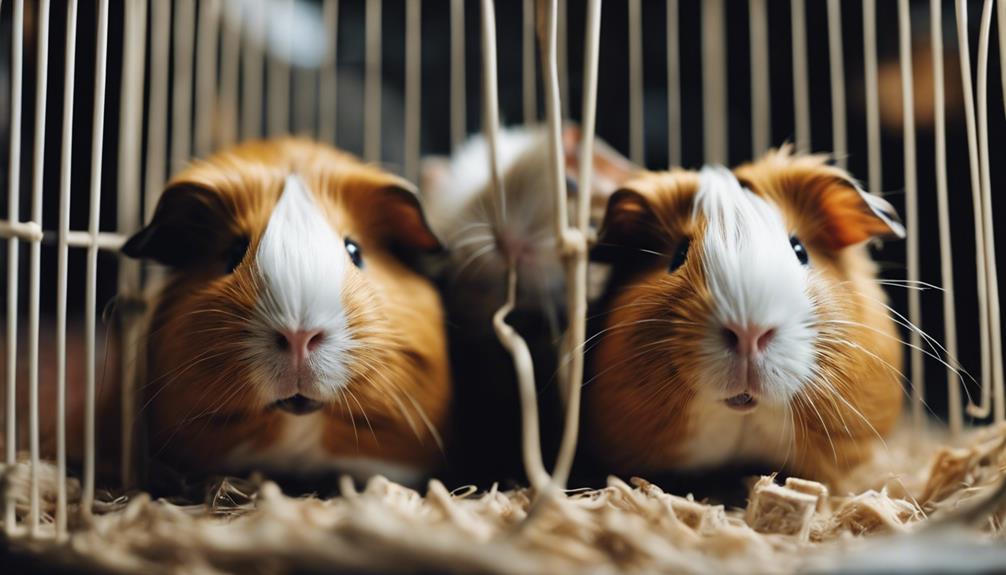
The well-being of a guinea pig is directly influenced by the size of its breed, affecting its space requirements for optimal health and happiness.
- Physical Health: Larger guinea pig breeds need more space to move around freely, preventing obesity and muscle atrophy.
- Mental Stimulation: Providing adequate space allows guinea pigs to explore, reducing boredom and promoting mental well-being.
- Social Interaction: Sufficient room enables guinea pigs to establish territories, interact with cage mates, and exhibit natural behaviors, enhancing their social health.
Guinea pigs thrive when their living environment caters to their specific breed size. Tailoring cage size to accommodate the needs of the guinea pig breed contributes significantly to its overall quality of life. By ensuring ample space, owners can reduce stress levels, minimize the risk of health issues, and promote a happy and contented pet. Understanding the impact of breed size on space requirements is essential in providing guinea pigs with a comfortable and enriching habitat.
Choosing the Right Cage Size
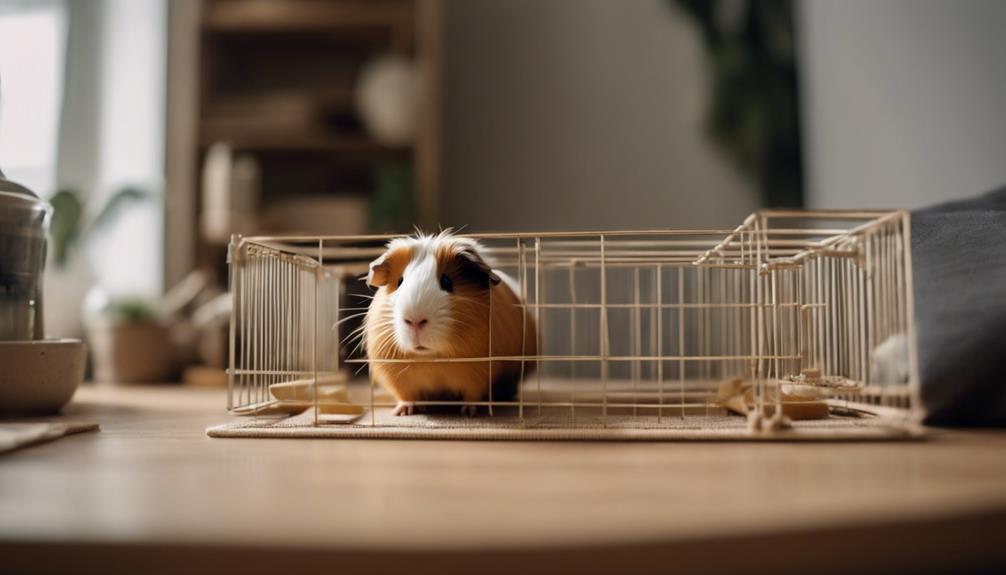
To ensure the well-being and happiness of your guinea pig, selecting the appropriate cage size is crucial in providing a comfortable and enriching living environment tailored to their specific breed size requirements. Guinea pigs are social animals that thrive in spacious environments that allow for ample movement and exploration. Consider the recommended minimum cage size of 7.5 square feet for one guinea pig, with an additional 3-4 square feet per extra guinea pig to ensure they have enough space for proper social interactions and exercise. Male guinea pigs, in particular, may benefit from extra space due to their territorial behavior. A well-sized cage should not only provide enough floor space but also include retreat nooks for privacy and safety. Larger cages not only promote active and healthier guinea pigs but also reduce the risk of health issues associated with cramped living quarters. Investing in a spacious guinea pig cage is an investment in their overall well-being and quality of life.
| Considerations | Guidelines | Importance |
|---|---|---|
| Cage Size | 7.5 square feet for one guinea pig | Provides ample space |
| Additional Space | 3-4 square feet per extra guinea pig | Promotes socialization |
| Male Guinea Pigs | May require extra space due to behavior | Ensures comfort |
Managing Space Constraints Effectively
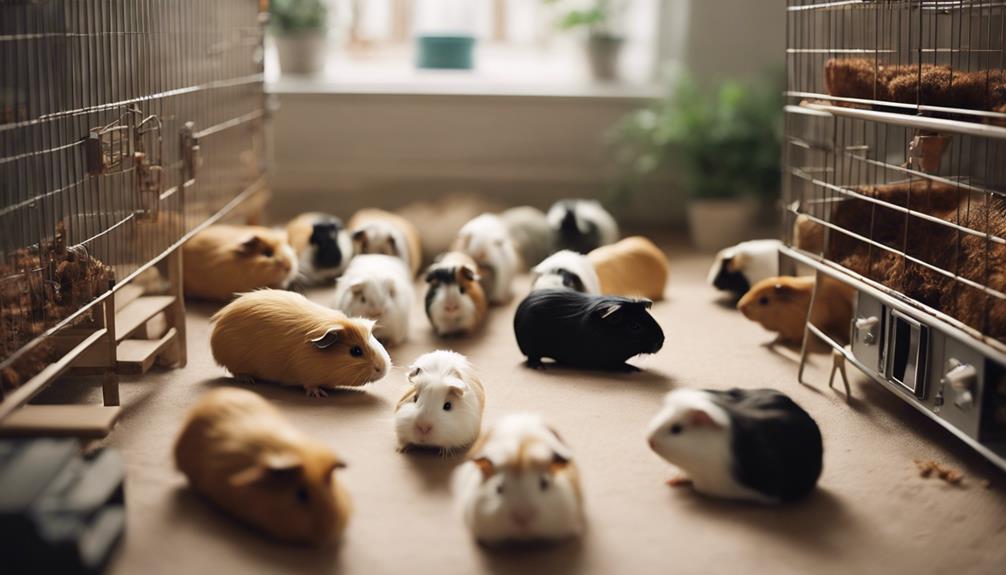
Considering the adult size variations among guinea pig breeds is essential for effectively managing space constraints to ensure their well-being and comfort in their living environment. When dealing with limited space for your guinea pig, here are a few key points to keep in mind:
- Choose the Right Cage Size: Select a cage that accommodates the adult size of your guinea pig breed, allowing them to move freely without feeling cramped.
- Utilize Vertical Space: Make use of multi-level cages or platforms to maximize vertical space, providing more room for exercise and exploration within a limited floor area.
- Optimize Layout: Arrange the cage layout efficiently by placing essential items strategically, such as food and water dishes, hiding spots, and toys, to create a spacious environment while meeting your guinea pig's needs.
Ensuring Comfort and Safety in Space
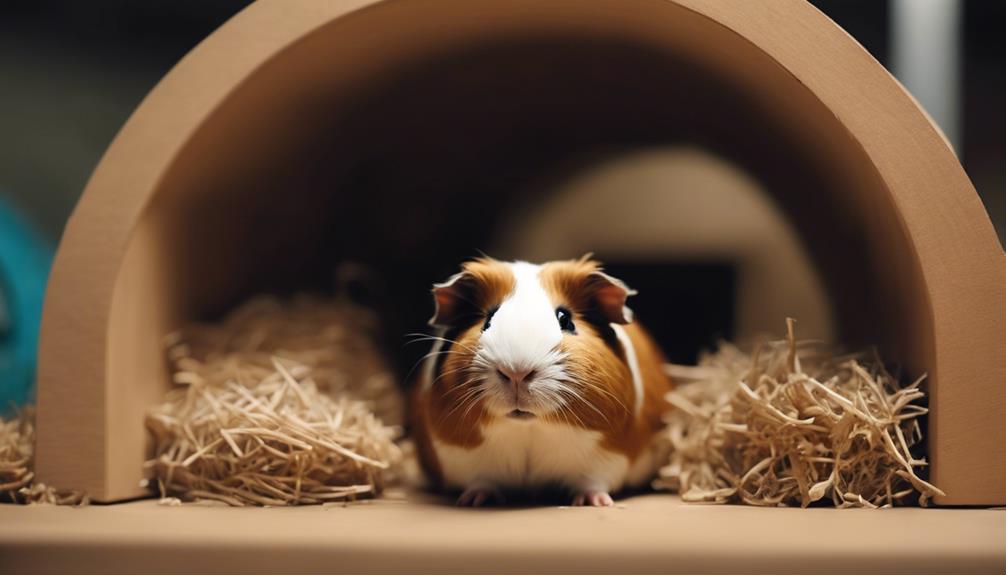
Ensuring guinea pigs have ample space to move comfortably is crucial for their overall comfort and safety. Guinea pigs need room to roam, exercise, and exhibit natural behaviors. Bigger breeds, in particular, require extra space to prevent overcrowding and territorial conflicts. These social creatures thrive in environments that allow them to interact without feeling cramped.
By providing sufficient space, you can minimize stress, aggression, and potential health issues in your guinea pigs. Remember that different breeds have varying space requirements, so it's important to research the specific needs of your chosen breed. Adequate space is essential for the well-being, happiness, and safety of guinea pigs of all sizes.
Prioritizing their comfort by offering a spacious living area contributes to their overall quality of life. Create a safe and comfortable environment that promotes their physical and psychological health. Your guinea pigs will thank you with their playful antics and contented squeaks.
Frequently Asked Questions
How Big of a Space Do Guinea Pigs Need?
In providing room for their furry companions, one must consider the essential aspect of cage size. Guinea pigs require ample space ranging from 7.5 to 10.5 square feet, ensuring a cozy home for their playful antics.
Is a 2 by 4 Big Enough for 2 Guinea Pigs?
Yes, a 2 by 4 cage is big enough for 2 guinea pigs. This size meets cage requirements, promoting social interaction and fulfilling exercise needs. Guinea pigs benefit from ample space to move around, enhancing their physical and mental well-being.
Is It Better to Have 2 Male or 2 Female Guinea Pigs?
When deciding between two male or two female guinea pigs, consider their gender dynamics, social behavior, and compatibility issues. Monitoring interactions and providing ample space for territories can prevent aggression and stress in the cage.
How Big Is My Guinea Pig Supposed to Be?
Guinea pig size varies by breed, with adults typically 8-10 inches long and 1.5-2.6 pounds. Rex guinea pigs can reach 17 inches. Regular weight checks are crucial to monitor health. Genetics, diet, and health influence size.











